- Home
- Jack Campbell
The Lost Fleet: Beyond the Frontier: Leviathan Page 13
The Lost Fleet: Beyond the Frontier: Leviathan Read online
Page 13
He gestured on his display and the depiction of the dark ship main formation swung slightly over and up. “But if we actually aim for this point, where nothing is . . .” His finger rested above and to port of the enemy path.
“We’ll be able to clip the upper edge of their main formation and concentrate our fire on the two battleships there,” Desjani said, nodding. “But if they don’t do what you expect, the firing pass will be wasted. We won’t have anything within range. Neither will they, but they can afford to waste firing passes. We can’t.”
“I think it’s our best option,” Geary said.
“It’s definitely a good option.” She bent another questioning look on him. “It’s not stupid, either. Are we reserving the stupid options for later?”
“Yeah.” He rubbed his chin, gazing at his display. “I just have a feeling that we shouldn’t go stupid right away.”
Desjani nodded at him. “Listen to that. You don’t know who or what is sending you that feeling.”
“Yes, Captain.” Geary gestured toward her this time. “What are you feeling?”
“Me?” She paused, looking away, then back at him. “I’ve got this odd sense that the other shoe hasn’t dropped yet.”
“Something else is about to happen?”
“I don’t know. It’s just that feeling.”
“Let’s hope it’s a good shoe,” Geary said.
“And that it drops on the dark ships,” Desjani agreed.
In a few more hours, they would know.
—
EVERYTHING looked great. Geary kept scanning his display with growing irritation, wondering what was bothering him. And why did he keep thinking about Jane Geary? Something she had said . . .
But she had gotten those reports to Unity. People would be acting on them. Hopefully, the people involved in the dark ship program would be getting some tough questions, told to fix the problems, shown what the dark ships had done—“Damn.”
“What?” Tanya instantly glanced over, ready to respond to an order.
“I think—” Geary took a deep breath and started again. “Please have one of your officers run a time line for me. Start with when Captain Jane Geary delivered my reports to Unity. Factor in the time she was delayed there and the time required for her to get back to Varandal. Compare that to the days required for a courier ship to hypernet from Unity to some star system in this region of space and how long ago the dark ships appeared at Bhavan, and see how many days that leaves.”
“Why assume the dark ship base is in this region?” Desjani asked.
“Because on the hypernet, longer trips take less time.” Physicists with the right specialties claimed to understand why that was, but everyone else just chalked it up to the weirdness of the quantum mechanics on which the hypernet was based. “I want to see how it works out using a longer trip time.”
Desjani gestured with one hand toward Lieutenant Castries, who bent to the task. “How serious is this?” Desjani asked.
“It could be very serious.”
“Captain,” Castries said, “there’s about a week and a half difference. Eleven days. That other courier ship could have reached this region well before Captain Geary made it back.”
“But why—?” Desjani began, then her eyes widened. “Long enough to enter more data into the dark ships and for them to jump to Bhavan.”
“Right,” Geary said. “We’re basing our attack on the assumption that the dark ships learned nothing from what I did at Atalia because that information died with the dark ships we fought there and at Varandal. But that same information, from our own ships’ data, has surely been given to the authorities at fleet headquarters and spread through the Alliance government. If anyone at those places, anyone like those two mystery agents who messed things up on Ambaru, sent that data to the dark ships, then they know everything. They may have planned this attack based on that information.”
“And we only have five minutes left until contact.” Desjani took a deep breath. “All right, Admiral. Your opponent received a report of what you did in your last battle. Do you repeat the last successful tactic because everyone knows you don’t repeat yourself, or do you mix it up because you assume the enemy will be prepared for what you did last time?”
“I mix it up,” Geary said immediately. “I don’t assume the enemy will do what I want them to do.”
“Will an AI based on your tactics do the same?”
With so little time remaining until contact with the enemy, he considered the question for several seconds that felt like minutes. “An AI is going to be calculating percentages. Determining the most likely outcome and planning for that. And the most likely outcome is that I will vary my tactics because that is what I have done most frequently.”
“Then we need to shift to stupid—” Desjani began.
“No. The dark ships have enough forces to cover that option,” Geary said. “All of my instincts say that we should continue the attack as planned.”
“Two minutes to contact,” Lieutenant Castries reported.
Geary touched his comm controls. “Formation Tango One, at time five two, come up zero point five degrees, come port zero one degrees, accelerate to point one five light speed. Formation Tango Two, at time five two point five come up zero one degrees, come port zero two degrees. Formation Tango Three, at time five two point seven come up one point five degrees, come port two degrees.”
“One minute to contact.”
One minute. Geary’s ships were traveling at point one light speed, as were the dark ships, for a combined closing rate of point two light speed. That translated into more than three and a half million kilometers every minute. At one second from contact, the enemy would still be sixty thousand kilometers away.
He had already pivoted his formations in space, the diamonds which had formerly been arranged vertically along their path through space swinging their ends around so that all three diamonds were now almost flat along that path, each with their leading point aimed for the place in space where Geary’s force and the dark ship formations would come into contact.
Geary felt Dauntless altering vector slightly in response to his commands, saw the other ships in the three subformations of the First Fleet also begin shifting their paths a tiny amount in those last few seconds before contact. The dark ships would be doing the same, trying to second-guess Geary’s maneuvers. The one who did a better job of guessing what the other would do would end up able to hit a small portion of the enemy force with all of their power. If both guessed wrong, the two forces might tear past each other too far away for any hits to be scored. Or the two forces might run headlong into each other, in which case both sides would hit and be hit with everything available, creating a split-second-long bloodbath.
But, if he guessed right, all three flat diamonds would pass in rapid succession close above one segment of the main dark ship formation.
Human reflexes could never have reacted quickly enough. In the tiny fraction of a second in which the ships were in range of each other, automated fire-control systems fired. Missiles volleyed out first, then hell lances ripped through space, and microseconds later grapeshot volleyed into the path of opposing ships.
Geary felt Dauntless lurch from a couple of hits as his ships tore away from the firing run. His display lit with damage reports as the fleet net consolidated reports from every ship. Immediately after that, the fleet’s sensors began reporting the damage they could detect on the dark ships.
Dauntless and the other battle cruisers in the Tango One formation had inflicted little damage, because their last-minute burst of acceleration had pushed their relative speed up past point two light and into a region where human fire-control systems could not adequately compensate for distortion caused by relativity. But as Geary had guessed might happen, every dark ship close enough to the path of the Alliance ships had targeted Da
untless, and their own shots had also gone wide. When tearing past each other at more than sixty thousand kilometers per second, even the tiniest error in the fire-control solutions meant a large miss.
“We wasted our shots,” Desjani grumbled.
“And you didn’t get your own butt shot off,” Geary said, studying the reports flooding into his display.
The following two Alliance formations had sliced just above the same corner of the dark ship main body, all the Alliance battleships training their fire on the two dark battleships anchoring that part of the enemy formation. The first nine battleships had done terrible damage to one of the dark battleships, which despite its massive shields, armor, and firepower could not withstand the fire of nine Alliance battleships. The enemy ship was still moving, but its forward portion had been battered into ruin, most of its weapons knocked out.
Geary fought back a curse as he saw that the second Alliance battleship formation had been just too far out, its path just a little too distant from the dark ship formation passing beneath it. Only a few missiles had gone out from both Alliance ships and dark ships as the last Alliance subformation passed, and all of those missiles were caught in hopeless stern chases of their targets.
Destroyers, light cruisers, and heavy cruisers on both sides had traded shots as well. Dozens of Geary’s ships had taken significant damage, as had a score of the dark ship escorts, but with everyone focusing most of their fire on the battleships and battle cruisers, none of the smaller warships had been knocked out.
The encounter hadn’t been a disaster. But it hadn’t inflicted nearly enough damage on the dark ships.
“They split the difference,” Desjani said as she looked at her display. “They assumed you might go for that one wing formation of theirs but also protected against a strike against another part of their formation. Why aren’t we coming back around?”
The question startled him. Why hadn’t he already ordered his fleet to begin the massive turns required to reengage the dark ships? Instead, the Alliance ships were now racing toward . . .
The jump point for Varandal.
“Let’s see if they chase us,” Geary said.
“But Bhavan—”
“Captain Desjani, the odds are not good here. If we can get those ships to chase us, get them to remain focused on catching and destroying Dauntless, then the defenses at Varandal can help us whittle down their numbers.”
“The dark ships are coming around,” Lieutenant Yuon said.
Geary watched the dark ships swing through the wide turns required by the immense velocities they were traveling, watched them steady up on vectors that were aimed at catching the Alliance ships, waited for them to accelerate so they would be able to slowly catch up with Geary’s warships . . .
“Why aren’t they accelerating?” Desjani asked after several more minutes. “They’re just hanging back there.”
He didn’t answer, watching the depictions of the dark ship formations, the largest swinging in directly behind Geary’s ships, one of the smaller ones arcing high above and to starward, and the other small dark ship grouping diving down and to port. “I wouldn’t be doing what they’re doing. Why are they doing that?”
“Damned if I know.” Desjani rubbed her chin, eyeing her display. “It feels like they’re trying to herd us, to keep us headed for the jump point for Varandal. Is that their idea? Are they focused now on trying to repel what they think is our attack on Bhavan?”
“That’s possible.” Geary checked something on his display, feeling an odd sensation inside as he looked at the data. “They shed some momentum in their turns, but they haven’t tried to make it up. They haven’t accelerated back up to even point one light, let alone going faster to try to get closer to us. They may be herding us as you say, but they sure as hell aren’t chasing us.”
“Yes.” She twisted her mouth and nodded. “They don’t want us accelerating. Why wouldn’t they want us to increase speed?”
“It looks like they want us to head for the jump point for Varandal,” Geary said.
“And they don’t want us to get there too quickly.” Her gaze went to the jump point. “What do they expect to show up there?”
“If it were I,” Geary said, his voice grim, “I’d be expecting reinforcements.”
She bit her lip, looking down, then laughed softly. “And they’ve got fourteen battle cruisers left. I’ve got to give them credit. They did have a backup plan to get us to come to Bhavan. Their battle cruisers were going to chase us here if we didn’t come on our own.”
“Chase our battle cruisers here,” Geary agreed. “Right into the teeth of that ambush. And now they’ve maneuvered us so we’ll run head-on into those arriving battle cruisers.”
“No. No,” Desjani objected. “How can they possibly time it that well? Another force transiting at least one other star system? How can they be so sure that force is about to arrive here within some fairly compact time frame? What the hell is their margin of error?”
“Captain,” Lieutenant Castries said. Both Geary and Desjani twisted in their seats to look back at her watch station. Castries didn’t quail under the attention of her seniors, but she was clearly choosing her words with care. “Our systems use standard assumptions whenever calculating maneuvers. It’s a percentage of the assessed time, which is based on assuming distance and acceleration/deceleration are all exactly as calculated. Then the maneuvering systems add in the standard error factor.”
“Yes,” Desjani agreed. “And your point is?”
“Captain, the dark ships must be using Alliance maneuvering systems, so they will be using the same standard assumptions as our systems. But we know those are just estimates. We use them, but we don’t assume the standard error figures are going to be exactly right.”
Geary finally understood. “But the artificial intelligences will assume the figures are absolutely accurate. They’ll assume that the probable error estimates can be used just as if they were solid numbers. Which is why they think they can plan for their battle cruiser force to appear before we get to the jump point for Varandal. Captain Desjani, the odds here were already bad. If we end up fighting the dark battle cruisers as well, this bad situation would quickly become ugly.”
He had to admire the way Tanya reacted to the changing circumstances.
“Varandal?” she asked, dropping her earlier insistence on holding the line at Bhavan.
“Yes. We get to the jump point first, we jump for Varandal, then we set up an ambush there, backed up by every defensive resource Varandal has. When the dark ships come through the jump point after us, we’ll hit them hard.”
The necessary orders were easy enough, altering the vectors of the three First Fleet formations a little to bring them on a direct course for the jump point. Figuring out the right acceleration to use was a bit harder given the damage many of his ships had already sustained. “Immediate execute, all units in First Fleet, accelerate to point one five light speed.”
The dark battleships were several light-minutes behind Geary’s ships by now. He waited to see how they would react.
Fourteen minutes after Geary’s ships began accelerating, he got his answer.
“Dark ship formations are braking slightly,” Lieutenant Castries said. “They’re reducing velocity,” she added, sounding baffled.
“They want us to slow down, too,” Desjani said. “That’s a clumsy way to try to influence us, though.”
“It’s all they’ve got,” Geary said. He didn’t feel happy at having guessed right. Instead, he could not stop watching the jump point for Varandal. “Even the dark battleships can’t accelerate fast enough to catch us in the time they’ve got, but I bet they’ll bring their velocity back up once they realize we’re not going to slow down to accommodate their plans.”
“We’ve still got more than eleven hours’ travel time before we get to the jum
p point,” Desjani said. “Assuming you reduce our velocity down to point one light speed for the jump at a rate that all of the damaged ships can handle.” She glared at her display. “I wish we could have knocked out at least one of their battleships. But that one we beat to hell is still able to keep up with its formation. You know, if those battle cruisers do come through, and we can hit them with all of our battleships . . .”
He shook his head. “If I were commanding those dark battle cruisers, I wouldn’t seek a direct fight with that many battleships. I’d maneuver to try to hit our formation with the battle cruisers in it, and if I couldn’t do that, I’d try glancing firing passes to wear down the enemy. If we’re lucky, if the enemy battle cruisers come through just before we jump and can’t avoid our formations, we’ll hit them hard and keep going.”
He didn’t say what everyone else already knew. The dark battle cruisers could hit Dauntless and the other Alliance battle cruisers hard as well in such an encounter.
Eleven hours. He called the other ships in the fleet, telling them what he intended. It was a measure of how much he had influenced the fleet that no one protested about “fleeing” to Varandal. Or perhaps the commanding officers of Geary’s ships could read the situation and had no particular desire to die fighting against weapons the Alliance itself had created. Not unless they had a good chance of victory, which did not exist at Bhavan.
His sense that he was on top of the situation lasted for another twenty minutes.
“The dark ship formations are altering vectors,” Lieutenant Yuon said as alerts sounded on everyone’s displays.
“Where are they going?” Desjani demanded.
“They’re swinging starboard, as if they intend heading in-system,” Yuon said. “I think . . . Captain, I think they’re heading to intercept the primary inhabited planet in its orbit.”
“Hell.” Geary rubbed his forehead, thinking through options. “They’re moving to bombard the planet.”
“If they wanted to hit that planet, they could have launched their bombardment from where they were without changing course,” Desjani protested.

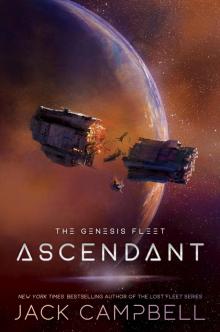 Ascendant
Ascendant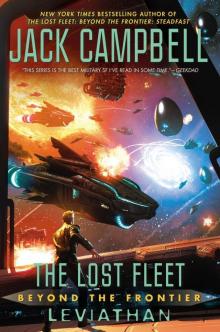 Leviathan
Leviathan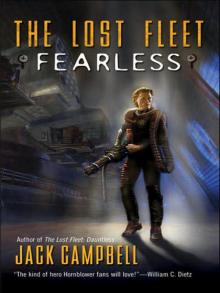 Fearless
Fearless Shattered Spear
Shattered Spear The Pirates of Pacta Servanda
The Pirates of Pacta Servanda The Sister Paradox
The Sister Paradox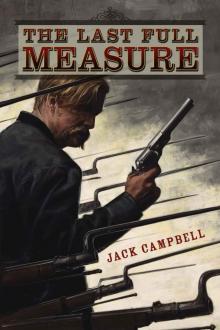 The Last Full Measure
The Last Full Measure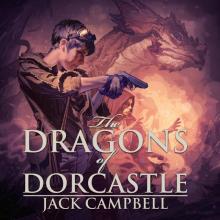 The Dragons of Dorcastle
The Dragons of Dorcastle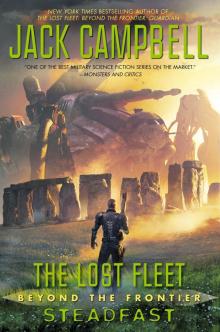 Dreadnaught
Dreadnaught Swords and Saddles
Swords and Saddles The Hidden Masters of Marandur
The Hidden Masters of Marandur Relentless
Relentless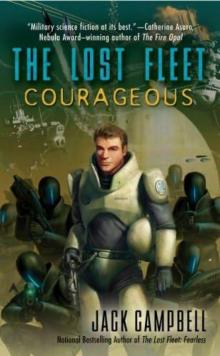 Courageous
Courageous Ad Astra
Ad Astra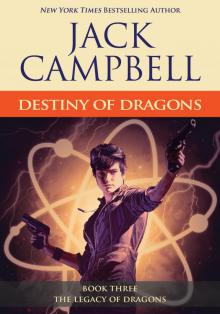 Destiny of Dragons
Destiny of Dragons Borrowed Time
Borrowed Time Dauntless
Dauntless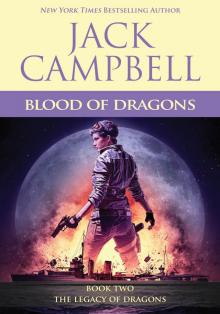 Blood of Dragons
Blood of Dragons Perilous Shield
Perilous Shield The Assassins of Altis
The Assassins of Altis Vanguard
Vanguard Pirate of the Prophecy
Pirate of the Prophecy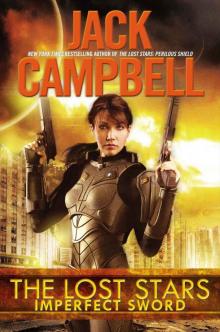 Imperfect Sword
Imperfect Sword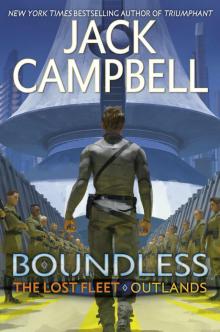 Boundless
Boundless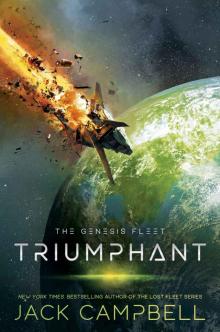 Triumphant
Triumphant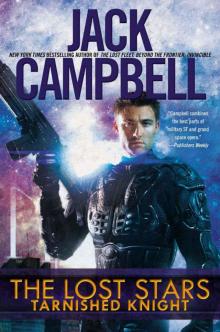 Tarnished Knight
Tarnished Knight Daughter of Dragons
Daughter of Dragons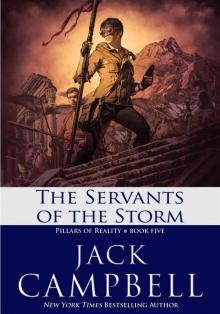 The Servants of the Storm
The Servants of the Storm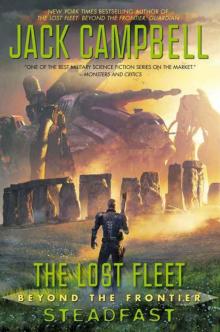 Steadfast
Steadfast Fate of the Free Lands
Fate of the Free Lands Explorer of the Endless Sea
Explorer of the Endless Sea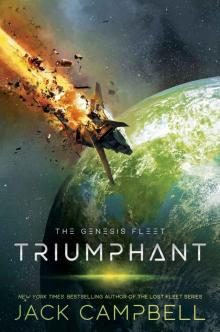 Triumphant (Genesis Fleet, The)
Triumphant (Genesis Fleet, The) The Lost Fleet: Beyond the Frontier: Steadfast
The Lost Fleet: Beyond the Frontier: Steadfast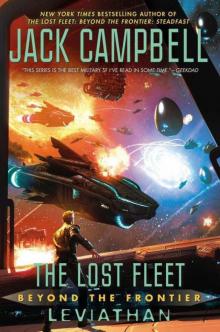 The Lost Fleet: Beyond the Frontier: Leviathan
The Lost Fleet: Beyond the Frontier: Leviathan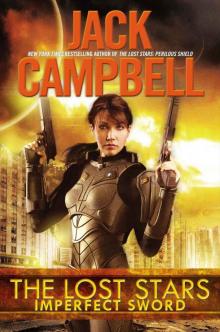 The Lost Stars: Imperfect Sword
The Lost Stars: Imperfect Sword Dreadnaught tlfbtf-1
Dreadnaught tlfbtf-1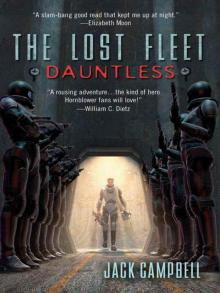 The Lost Fleet: Dauntless
The Lost Fleet: Dauntless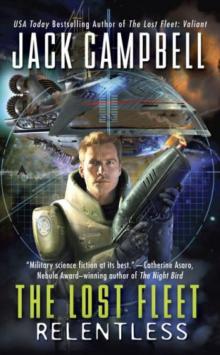 Relentless tlf-5
Relentless tlf-5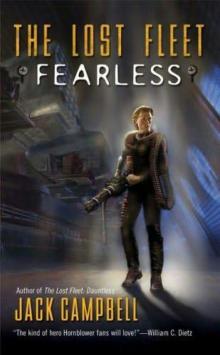 Lost Fleet 2 - Fearless
Lost Fleet 2 - Fearless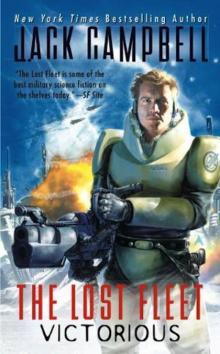 Victorious tlf-6
Victorious tlf-6 Dauntless tlf-1
Dauntless tlf-1 The Pirates of Pacta Servanda (Pillars of Reality Book 4)
The Pirates of Pacta Servanda (Pillars of Reality Book 4)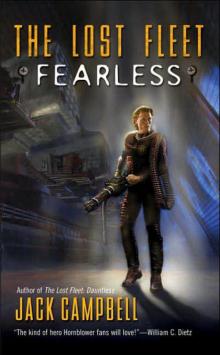 Fearless tlf-2
Fearless tlf-2 The Lost Stars: Perilous Shield tls-2
The Lost Stars: Perilous Shield tls-2 Lost Fleet 5 - Relentless
Lost Fleet 5 - Relentless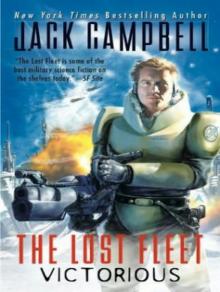 Lost Fleet 6 - Victorious
Lost Fleet 6 - Victorious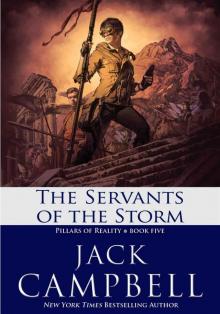 Pillars of Reality 5- The Servants of the Storm
Pillars of Reality 5- The Servants of the Storm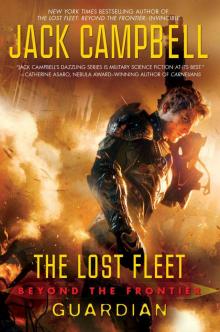 The Lost Fleet: Beyond the Frontier: Guardian
The Lost Fleet: Beyond the Frontier: Guardian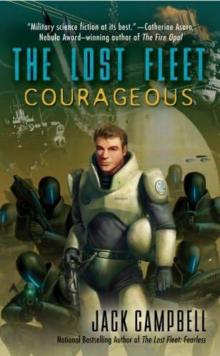 Lost Fleet 3 -Courageous
Lost Fleet 3 -Courageous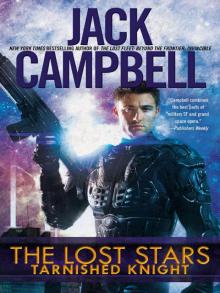 The Lost Stars: Tarnished Knight
The Lost Stars: Tarnished Knight Beyond the Frontier: Steadfast
Beyond the Frontier: Steadfast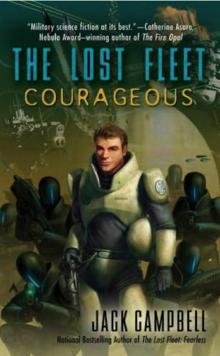 Courageous tlf-3
Courageous tlf-3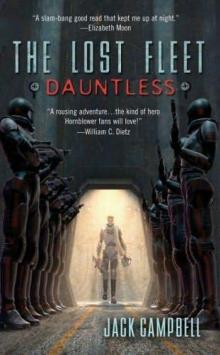 Lost Fleet 1 - Dauntless
Lost Fleet 1 - Dauntless The Lost Stars
The Lost Stars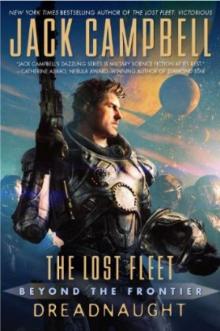 The Lost Fleet: Beyond the Frontier: Dreadnaught
The Lost Fleet: Beyond the Frontier: Dreadnaught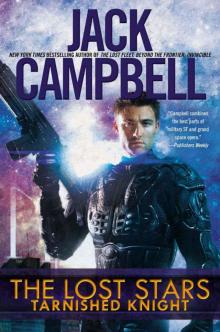 The Lost Stars 01-Tarnished Knight
The Lost Stars 01-Tarnished Knight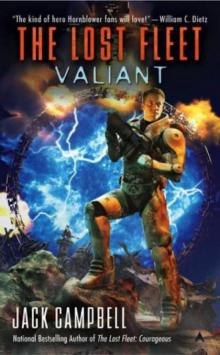 Valiant tlf-4
Valiant tlf-4 The Wrath of the Great Guilds (The Pillars of Reality Book 6)
The Wrath of the Great Guilds (The Pillars of Reality Book 6)